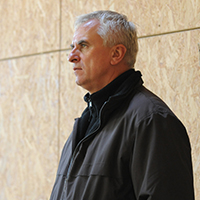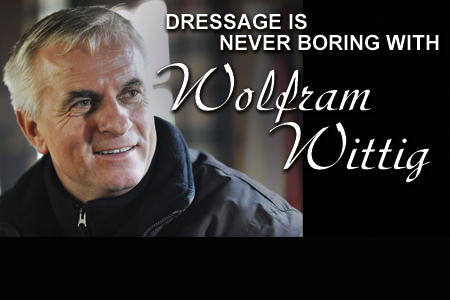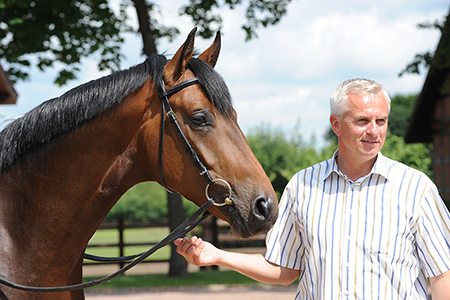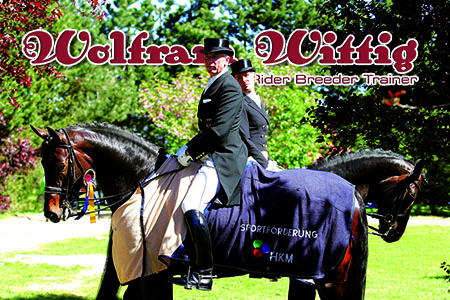Who's Who

Wittig, Wolfram
Discipline : Dressage Trainer, Sporthorse Breeder
Born : 1958
Lives : Rahden, Germany
Wolfram trained with Walter Beiderman, and now runs an extremely successful training centre, and stud, with his wife, Brigitte. One of the most famous riders he has helped is Isabell Werth. Wolfram won many Grand Prix with his homebred stallion, Breitling W, and most recently, both Wolfram and Brigitte have been winning and placing at Grand Prix level Breitling progeny.
In the November issue of The Hanoverinan, Wolfram Wittig explained what he was looking for when training young horses.
“At the beginning of the workout, it is important to allow enough time for loosening the horse in the walk to get rid of any tension and to get used to the new environment. One can begin with the actual workout, when the horse marches on in a content and relaxed fashion. Choose the trot tempo so that the horse exhibits good ground-covering and energetic movement. Horses are escape animals.”
“When a young horse at that age does not overstride in the trot, stay away from him. An overstride equal to the width of one hand is desirable for the walk as well as the trot. The rider will make use of these attributes during the more advanced training later on. Therefore it is important to only minimally limit the movement of the horses during the early years. Once the rider has established the proper tempo, the next goal is to allow the horse to drop his neck.”
“If the horse dives behind the vertical once or twice during the process, do not punish the rider for it. The neck is an important criterion in the movement, anyway. The horse should use it as little as possible. It is the horse’s balancing beam. If a horse already sways with his neck to the right and left, and up and down in order to maintain his balance and rhythm, what is going to happen, when the weight of the rider is added? It is important for the horse not to change the tempo while he chews the reins out of the rider’s hands nor while the rider picks the reins back up. The contact to the horse’s mouth needs to remain steady. If the trot does not get worse, while the horse chews the reins out of the rider’s hands, then you can be sure that the trot is not a ‘made’ trot. The exterior of the horse is very important for the walk. There is no swing in the walk. Hence the rider has to rely on the skeleton of the horse. A large, well-developed shoulder allows a horse a ground-covering stride, which is in most cases indicative of a good walk and also a good canter. Moreover, the walk hardly ever improves with training, yet the walk score has a coefficient of 2 in dressage competitions.”



